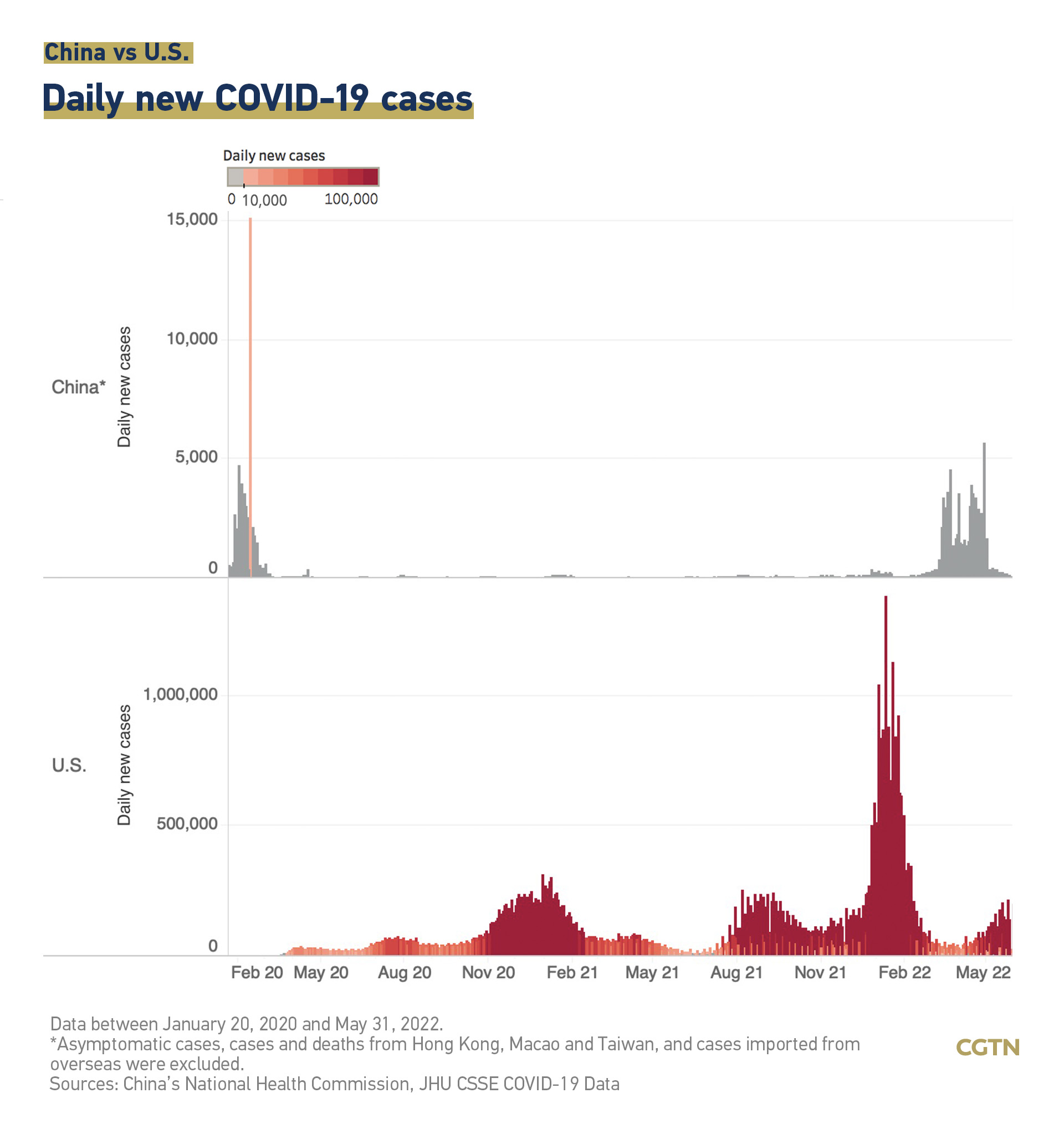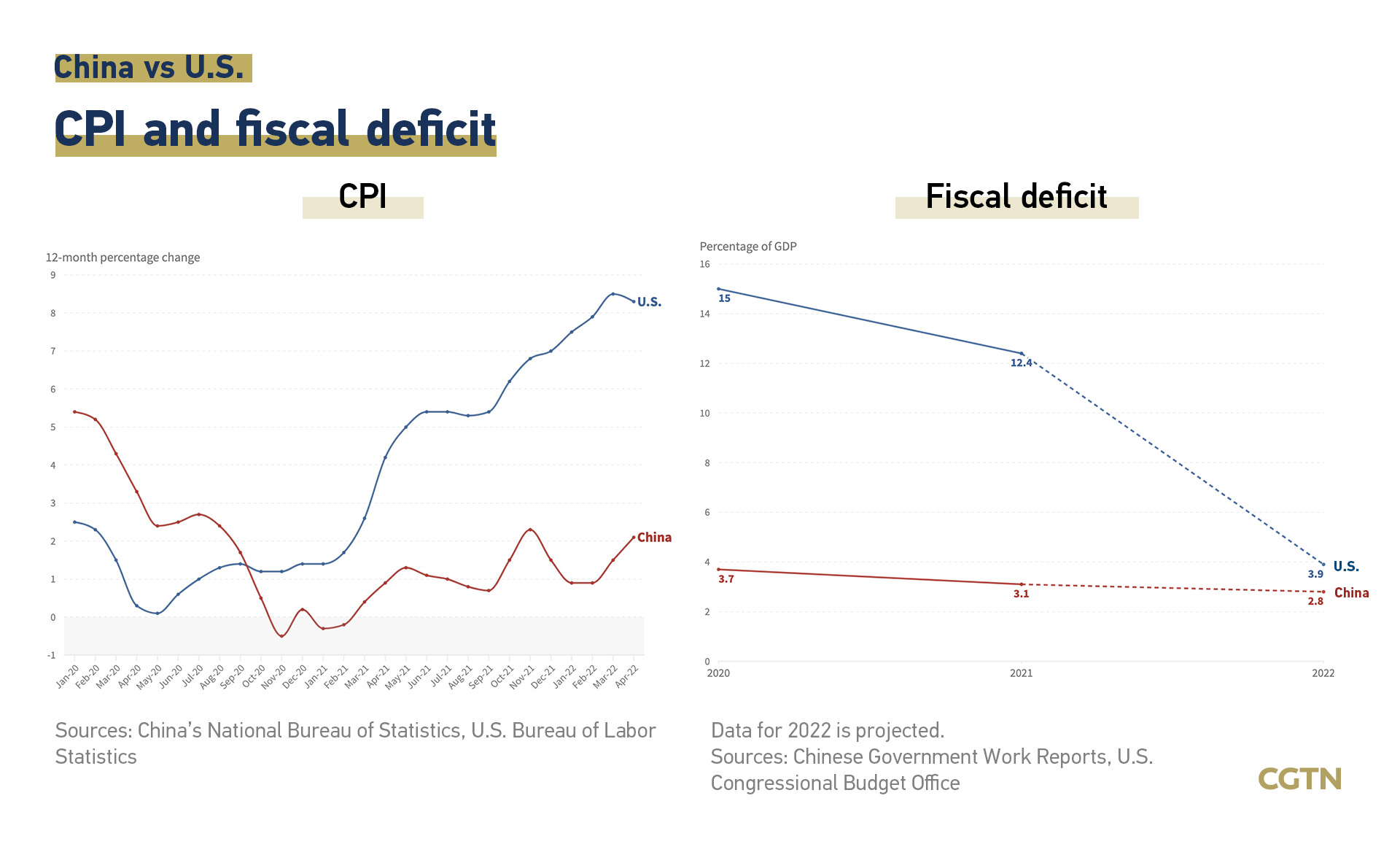The coronavirus has swept across the world since 2020, leaving havoc in its wake. More than any event in memory, the pandemic has been a global event.
But each nation has its own story of how it coped. The nations of the world ran the gamut in their responses to the COVID-19 pandemic — sometimes veering from strict to lax measures in the course of just a few months, or vice versa.
Here's a look at the state of the pandemic in China and the U.S., the two world powers across the Pacific.
Confirmed coronavirus cases and deaths
There have been at least 84 million coronavirus cases reported in the U.S. and over 1 million deaths due to the virus, at the end of May, according to a tally by Johns Hopkins University.
The number of confirmed cases in the U.S. was 376 times that of China, and the number of deaths 193 times.
Infection and mortality rate per 100,000
One out of every four Americans has been infected with the coronavirus, which China is experiencing 16 infections per 100,000 people.
The number of days with more than 10,000 confirmed cases
From January 20, 2020, to May 31, 2022, as many as 780 days reported more than 10,000 new confirmed cases in a single day in the U.S. The number of days with more than 10,000 new confirmed cases in China was only one day, excluding asymptomatic cases and cases from Hong Kong, Macao and Taiwan.
Waves of infections

Americans have been inundated by wave after wave of grim numbers, as shown in the daily new increases. As for China, the two most prominent outbreaks happened in February 2020 and March to April 2022.
Efficiency of resumption of work and production
In February 2020, after China issued the guidelines for resuming work and production, the industrial added value above the designated size increased by 36.6 percent month-on-month, whereas in the U.S., one month after the U.S. government released guidelines for reopening in April 2020, its industrial production value increased by 6.2 percent month-on-month.
Vaccination and mask-wearing
The Chinese National Health Commission announced that as of May 5, 1.25 billion people in China had been fully vaccinated, accounting for 88.7 percent of its population of 1.4 billion. That puts it ahead of the U.S., where just over 66 percent of the population were fully vaccinated.

China has spread out vaccination as well as mandated mask-wearing.
In February 2020, the early stage of the global outbreak, China's mask production capacity has rapidly expanded by four times, from 20 million to 110 million per day, while the U.S. mask production capacity has only doubled.
Unlike China, however, the issue of mask-wearing remains highly contentious in the US. Throughout the pandemic, U.S. public health officers have reported receiving death threats and harassment in response to their recommendations to wear masks and follow certain COVID-19 mitigation measures. The country is probably never going to come to a consensus on masks. Yet, they have become another source of political polarization.
Inflation and fiscal deficit

Inflation as gauged by the consumer price index (CPI) has been climbing since mid-2020 in the U.S. It rose 8.3 percent year over year in April, the Bureau of Labor Statistics reported. Defying the global surge, China's CPI rose by 2.1 percent in April.
Last year, the federal deficit of the U.S. totaled nearly $2.8 trillion, equal to 12.4 percent of GDP, down from 15.0 percent in 2020.
Both countries eye lowering the fiscal deficit for this year.
China's deficit for 2022 is projected at about 2.8 percent of GDP – roughly its ratio from 2019.
In Congressional Budget Office's projections, the federal budget deficit decreases to 3.9 percent this year and to 3.7 percent in 2023.

